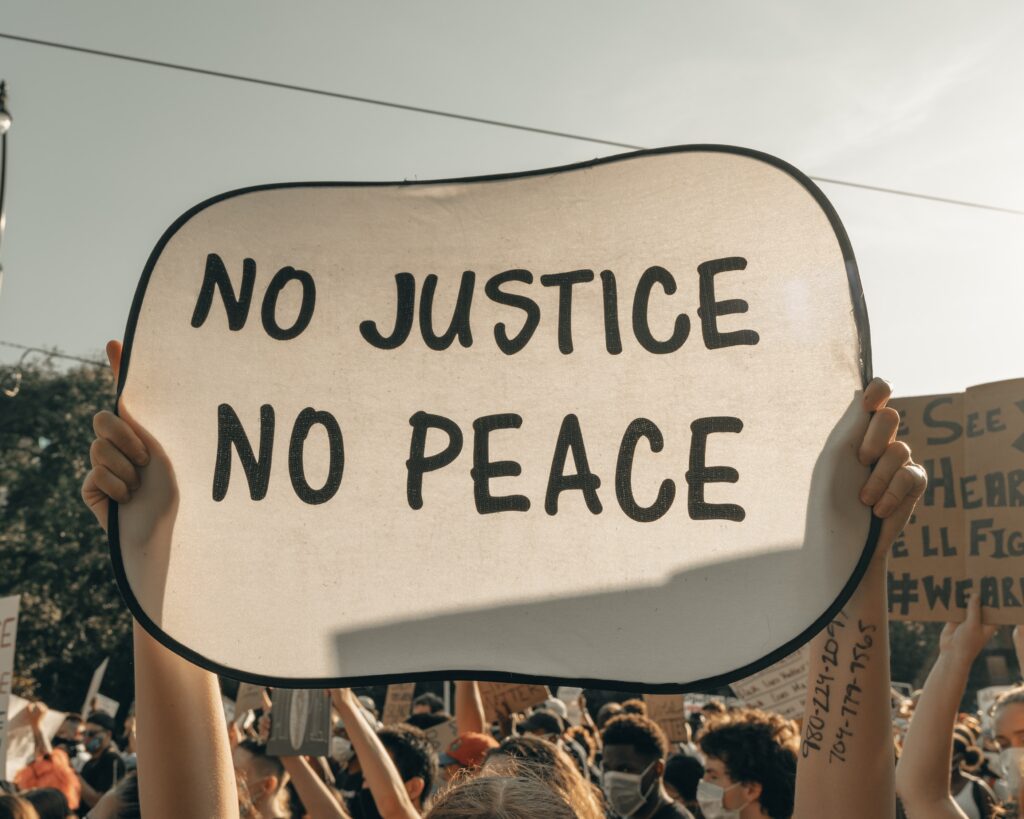The prevailing assumption among leftist circles in Israel, including most of the delegates of the Joint List, is that ending the occupation in the 1967 borders and establishing a Palestinian state in that territory may lead to a peace accord between the peoples. In that vision, the structure of the regime in Israel will remain as it is alongside the future Palestinian state. But we must ask: Can reconciliation really be achieved between the peoples while the regime arrangements in Israel itself remain intact?
The landmark decision by the High Court of Justice in the matter of the Qadan family is one of the most serious efforts to formulate and shape equal Israeli citizenship between Jews and Arabs within the 1948 borders. Justice Aharon Barak ruled in his decision, which was accepted by the majority of the bench, that land allocated by the state to the Jewish Agency and a cooperative association cannot be sold exclusively to Jews, because that is illegitimate discrimination. On a broader and more principled level, the decision provided that the state must treat Jews and Arabs with complete equality of rights. But we must note that simultaneously, Barak sought to anchor the Law of Return and the exclusive right of Jews to immigrate to Israel. He repeated that in a lecture he gave in 2000: “I believe the Arabs here, like all other citizens, are entitled to equality. In one of my decisions I describe that by saying that Jews have a special key to enter this country. That is the Law of Return. But once we are at home, here in Israel, we are all equal.”
I think it is important to look at the gap between the positions of Barak, who in his rulings often argued that they reflect the positions of the enlightened public in Israel, and the demand that arises from the most prominent protest of the Palestinian public in recent years – the “marches of return” on the Gaza Strip border. As we know, for a long time every Friday there were mass demonstrations, that were met by the Israeli military with a brutal shooting policy. Especially memorable is the image of Razan a-Najar, a volunteer Palestinian medic, who was shot to death, carrying a sign in the shape of a key, the symbol of Palestinian return, on which was written “I return.” So, then, is the entry key to Israel exclusively in the hands of the Jewish collective?
It is noteworthy that in addition to the question of return, Barak sought in his aforesaid ruling to anchor the history of Jewish settlement (which can be understood as the history of Palestinian dispossession) in Israel. And so he wrote:
This petition is mainly forward-looking. The petitioners do not mean to place under review the years-long policy according to which settlements were built all over the country (with the help of the settlement institutions), including kibbutzim, collective farms and lookout points – which were inhabited in the past and are inhabited today almost always exclusively by Jews. The petitioners do not focus their arguments on the legitimacy of the policy that prevailed in this regard in the period before Israel was established and in the years that have passed since. Nor are they questioning the decisive role the Jewish Agency played in the yishuv.
Thus, the model offered by the HCJ in its landmark decision offers equal citizenship to the Arab public within the 1948 boundaries, but at the same time seeks to establish the political structure that constituted and reproduces the privileges of the Jewish collective over the land, especially in the areas of immigration and settlement or housing. To this discussion about the Right of Return, the Law of Return, and the land and settlement policy, one can add the question of Israel’s definition as a Jewish state; the question of the legal authority vested (and still in force) in the Zionist organizations such as the Jewish National Fund and the World Zionist Organization to judaize the country; the questions of the state symbols (flag, anthem), and more. And besides the High Court of Justice, the leftist camp in Israel – civil society organizations, parties identified with the Zionist left, academic institutions – do not try to challenge the Israeli institutional structure, but rather to extract from it the possibility of a democratic and equal existence.

Therefore, the question is whether conciliation between the peoples is possible on the basis of the two-state paradigm, with Palestine in the 1967 borders alongside Israel as a Jewish and democratic state by definition. This is a critical question, the ignoring of which involves a real risk: after Ehud Barak declared that “there is no Palestinian partner,” among other things following disagreement over the Right of Return, the Israeli public actually adopted the assumption that the conflict is irresolvable at this time. From there the way to the ascent of the Israeli right was very short. Therefore, if we want to form a leftist camp with a clear and determined voice, we must address issues that relate to the very constitutional arrangements in Israel itself.
Furthermore, the question of 1948 is tied to another issue that has a critical impact on the chances of conciliation between the peoples: the history of the Mizrahi public in Israel. To understand the aversion, and sometimes even hostility, that this public feels towards the Israeli leftist camp, we must go back to the first decades of Israel’s existence, during which the Mizrahi public suffered from different practices of exclusion, subjugation, and even racist crimes. It is impossible to understand the rise of the Likud to power on the basis of a broad Mizrahi electorate without returning to events such as the suppression of the Wadi Salib and Black Panther protests, or historic affairs such as the “ringworm children” or the children of Yemen, the Middle East and the Balkans.
Here we must understand the connection between the Israeli “food chain,” established at the inception of the state, and the 1967 occupation. A wide Mizrahi public found a salve for its poor economic condition, which resulted from systemic institutional discrimination, in the new economic horizon that opened in the West Bank and the Gaza Strip. The welfare settlements were meant among other things to respond to Mizrahi demands for housing and land. Similarly, service in the security apparatuses, which serve the occupation among other things, provides stable employment for groups that were tracked into the social class of Israel’s hewers of wood and drawers of water. At the same time, during the first decades of the occupation of Gaza and the West Bank, Palestinian commuters replaced the low Mizrahi class and took their places in menial jobs.
Conversely, like in a mirror image, the Ashkenazi-secular group in Israel has an interest in defining the 1967 occupation as “ground zero” of the conflict, because it is the group that gained from the expulsion and dispossession following the 1948 war. From the Mizrahi perspective, and that of lower classes of Israeli society in general, one can ask why settlements such as Ma’ale Adumim or Ariel are an obstacle to peace, whereas confiscated land in the Galilee that was transferred to regional councils, or Palestinian “absentee properties” that were transferred mainly to Ashkenazim, are not part of the equation.
In conclusion, the need for a historic reparation, both with the Palestinian people and the Mizrahi public, brings us back to the colonial nature of the regime in Israel even before the 1967 occupation and even before Israel was established. While in the Palestinian context practices of dispossession and ethnic cleansing need to be addressed in areas such as immigration and settlement, in the Mizrahi context a discussion is required on different forms of exclusion, subjugation, and racist crimes. As I argued above, these issues are intertwined with each other. The last decades indicate that attempts to reach peace and reconciliation with normalization (and even glorification) of the regime in Israel and Zionist history are doomed to fail, and therefore contribute to the strengthening of the Israeli right. Instead, we must understand how a decolonization within the 1948 boundaries is a critical element and even a condition for ending the 1967 occupation.















